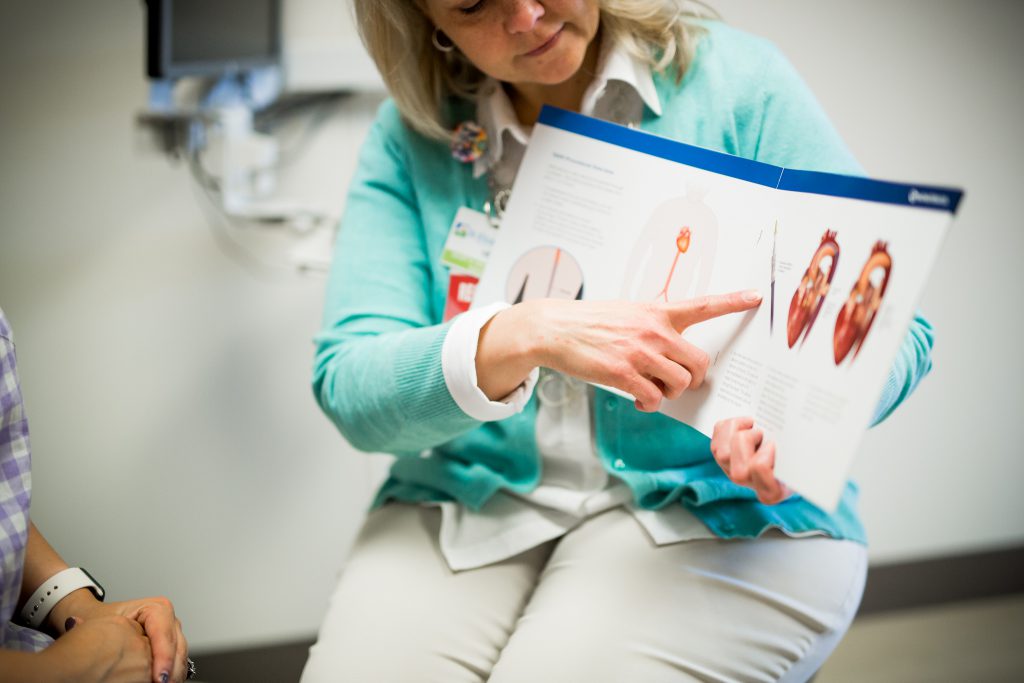Has one of your loved ones been told they need to have their heart valve replaced? If so, they probably have aortic valve stenosis.
When someone needs a heart valve replacement their quality of life is poor. They usually see a decline in daily activities and suffer from extreme fatigue. Typically, the doctor performs open heart surgery, removes the damaged valve, and replaces it with a new one.
But if you have other health issues, like congestive heart failure or renal failure, you may not be able to live through open heart surgery, or the tough recovery after surgery. That is where transcatheter aortic valve replacement or TAVR can be a life-saving, less-invasive option.
How Does TAVR Work?
Rather than taking out your heart valve and replacing it with a new one, TAVR inserts an artificial value inside of your damaged valve.
Saeb Khoury, MD, Interventional Cardiologist and Co-Director for the St. Elizabeth Valve Center describes the procedure, “The artificial valve is put in place by inserting a catheter into an artery through a small incision in your groin or chest. The new valve is then expanded within the damaged valve and the new valve becomes the functional valve. The old valve is squashed and it no longer blocks the flow of blood in the heart.”
TAVR does not require patients to undergo general anesthesia or be placed on a heart-lung bypass machine. The recovery from a TAVR procedure is typically a 48-hour stay in the hospital and a few weeks of recovery at home.
Who is a Candidate for TAVR?
Today, TAVR is only available for high or intermediate risk of complications for open heart surgery. Surgeons in the United States have only been performing TAVR for about 10 years, so it is considered a relatively new procedure.
Dr. Khoury explains, “Before TAVR there were no good options for someone at high or intermediate risk for complications. Because of the long-term success rate, open heart surgery is considered the standard procedure for someone at low risk for complications. More studies are being conducted to look at TAVR in patients with low risk, but today the FDA has only approved TAVR for high and intermediate risk, and people that would normally be considered non-operative.”
Although there are risks to TAVR, the results have been life-changing for patients. Dr. Khoury said, “I have patients come in the office after a few weeks and want to dance in front of me just to show off. They see a change almost immediately and it offers them an independence they haven’t felt for some time.”
Dr. Khoury feels by offering highly-advanced procedures like TAVR, the Heart & Vascular Institute team serves the patients better. He adds, “We have the Interventional cardiologist, cardiac surgeon, radiologist, nurse navigator, and the support teams working together even more closely. In the Hybrid OR, where these procedures are done, the Cath Lab and the OR staff work together seamlessly and the patient is assigned a nurse navigator at diagnosis, who stays with them through follow-up care”
If you have aortic stenosis, the multi-disciplinary heart team at St. Elizabeth Heart & Vascular Institute would complete a thorough evaluation and determine your best treatment options. For more information download a free guide to aortic valve replacement options.

